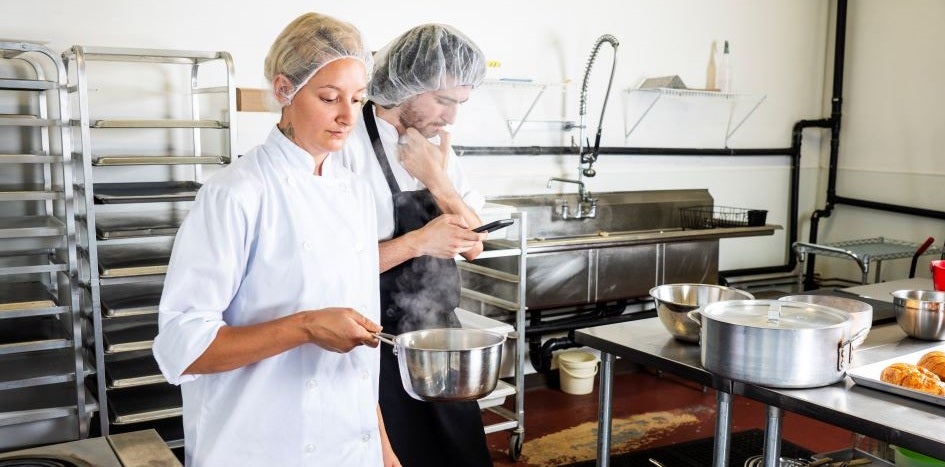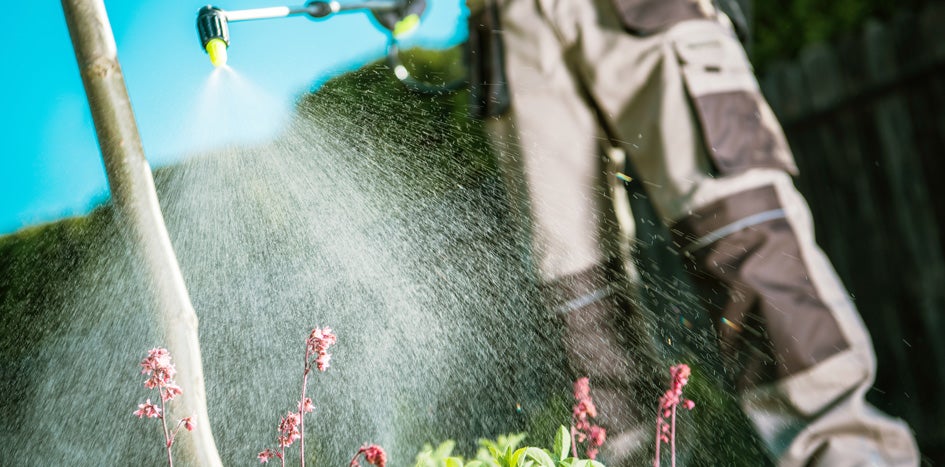5 Steps to Preventing Ladder Falls
Slip, trips, and falls account for 37 percent of injuries that cause educational services sector employees to miss work, according to Texas Department of Insurance data. Too often, the root cause can be traced to how we use- or don’t use–everyday ladders. Teach your team to avoid ladder falls by following these five steps.
How to Avoid Ladder Falls
Fall-related injuries happen at every level of an organization. Maintenance staff who neglect to inspect ladders before using them are at risk. So are teachers who hang decorations while standing on rolling chairs (Yes, it’s a thing).
Ladder safety training is key to staying safe on the job. The process starts before you step foot on the first rung and continues until the ladder is properly stored.
Step 1. Consider Whether You Need a Ladder
Just because you need to reach something above your head doesn't mean you need a ladder. Explore extendable tools that make it easy to change lightbulbs, clean elevated surfaces, and trim tree limbs safely from the ground. You might also be able to use aerial lifts as safer substitutes for ladders.
Step 2. Choose the Right Ladder
Ladders are not created equally. Let’s say the facilities team is conducting roof inspections during the spring, looking for damage caused by winter weather. If their work takes them near power lines or electrical equipment, they should avoid aluminum ladders.
To ensure you get the right ladder for the job:
- Learn the differences among extension ladders, stepladders, fixed ladders, and other ladder types.
- Check the sticker on the side rail for the ladder’s rating. The rating shows how much weight the ladder safely supports. Consider your weight, plus the weight of tools and equipment.
- Inspect the ladder (Spanish version) before using it. If you see damage, mark it with a “Do not use” tag, remove it from service, and tell your supervisor.
Step 3. Set Up Properly
The location and surface you choose when setting a ladder up can put you and your co-workers at risk of injury:
- Carry the ladder from the middle. If the ladder is too long to carry alone, ask a co-worker to help.
- Avoid high-traffic areas such as walkways and exits, or place safety cones around the ladder. Similarly, if you must set up near a door, take time to lock it, guard it, or block it open so it cannot swing into the ladder.
- Find a firm, level surface to set the ladder base on. Place the ladder on wide boards if the ground is soft or broken.
- Make sure straight ladders extend at least three feet above the top support. Secure the top and bottom off. If you cannot secure the bottom, have a co-worker hold the ladder.
- Use the four-to-one rule for straight ladders: The distance from the base of the ladder to the wall or other vertical surface should be one-fourth of the ladder’s working length.
| Ladder's working height | Distance of base from the wall |
| 12 feet | 3 feet |
| 16 feet | 4 feet |
| 20 feet | 5 feet |
| 24 feet | 6 feet |
Step 4. Climb and Work Safely
You can distill much of what you need to know about ladder safety into a single, memorable principle: Shortcuts cause injuries. Follow these tips to ensure every trip up and down a ladder is safe:
- If you can't reach something, take time get a ladder. Never use chairs, desks, or anything else as a substitute.
- Keep your body between the side rails to avoid over-reaching. Climb down and move the ladder if something is out of reach.
- Don’t carry tools or supplies while climbing. Hook things to your belt, put them in the accessory tray first, or have someone hand items to you from the ground.
- Face the ladder and maintain three-point contact: Two feet and one hand or two hands and one foot on the ladder.
- Stay off the top two stepladder steps and the top four ladder rungs.
- Do not splice ladders together or prop them on boxes, truck beds, or other surfaces to extend their reach.
Ladder Fall Prevention Starts with Leadership
Documented policies and procedures are core elements any safety program. But they'll likely fall flat without leadership commitment. Everyone, including the superintendent, CFO, campus principals, and division directors, must set the tone for a workplace safety culture.
Leadership should follow these tips to make it clear that ladders falls aren't an inevitable cost of teaching kids, working in food service, or maintaining your facilities:
- Follow the same ladder safety rules you expect employees to follow.
- Commit funds to repairing or replacing broken ladders.
- Provide regularly scheduled ladder safety training to employees.
Train Your Employees
The Fund's slip, trip, and fall training toolkit makes it easy to train your employees in as little as 15 minutes. Topics include housekeeping, ladder safety, and personal protective equipment. You'll get presenter's notes, discussion opportunities, and a takeaway resource for employees.

David Wylie
David Wylie serves as content developer on the risk solutions team. He brings more than 20 years' experience writing educational content that helps employers protect against workplace accidents, property damage, cybercrime, and other losses.
You May Also Like…
View All Related Insights
How To Manage and Mitigate Your Burn Risks
From bustling kitchens to science labs to maintenance and transportation shops, there are plenty of opportunities for burns to occur at your school or community college.

The Importance of a Thorough Accident Investigation
Conduct accident investigations to uncover the root causes of workplace injuries, correct them, and reduce the risk of similar injuries.

A Bird’s Eye View of Integrated Pest Management Compliance
State law requires schools to designate a trained integrated pest management (IPM) coordinator and implement an IPM program that includes these core elements.

Are Science Experiments at Home Safe?
Online science curriculum vendors should give parents and students the information and equipment necessary to complete assignments safely.
